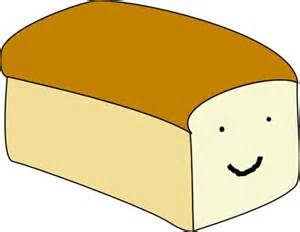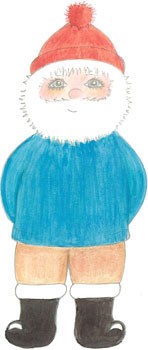
Salty Sam’s Fun Blog for Children
Number 128
Windmills
Hello Everyone
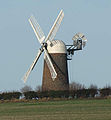
l’m always telling you about my nephews Bill and Bob, but l haven’t ever told you much about my brother. His name is Windy Wally and yes, you’ve guessed it, he lives in a windmill.
Lots of people love windmills; they were voted the favourite type of building in a poll once.
A lot of children know what windmills look like, but they don’t really know how they work. So l will tell you because my brother has shown me.
Let’s start at the top and work our way down…
A windmill has a round top and this actually swivels round. Attached to one side of it are four large sails (or sweeps) or a wheel that looks like a fan. For these sails to be working properly they have to be facing into the wind and that is why the top of the windmill has to move round. Another sail at the back of the top helps to move the top round into the right position.
The large sails start to turn when the wind starts to blow. When possible, the windmills would have been built in high places so that they had more of a chance to catch the wind. The tops of hills are usually windier than anywhere else.
The sails are attached to a series of rods and cogs which run down inside the mill to work the millstones. This series of cogs helps to make the machinery inside the mill work faster than the speed of the enormous sails outside.
The cogs are called gears and the process is called ‘gearing up’.
The millstones inside the building are two enormous round stones that grind against each other. The top one moves round and the bottom one doesn’t.
The top one has a hole in the middle that the corn or wheat is tipped into, and the bottom one has grooves running outwards from the centre. The grain is ground between these stones and the outside skins of the grains, called the husks, are separated from the insides. The insides of the grain are ground down and become a powder called flour.
This flour trickles down the grooves in the bottom stone to the outer rim where it is collected and put into sacks. The flour is of course used to make bread, cakes and biscuits.
The top stone is called the runner stone and the bottom stone is called the bedstone.
Wind-driven machines go back about two thousand years to ancient Greece. They also had them in ancient China and Tibet from about the 4th century. There have been types of windmills in Britain since the 12th century. They were used for hundreds of years and there were many thousands of them across the country. Millers (the men who owned the mills) were usually quite rich because they always had business. Bread was a very important part of people’s diet and grinding corn or wheat by hand was very hard work.
Only a few windmills survive today, but some of them are open to the public so that people can see how they worked.
Some windmills are still working and making flour; and some are just homes for people who like to have wonderful views from the top of their houses!
Not all windmills grind corn. ln Norfolk in the east of England and also in Holland where the land is very flat and the ground can become very water-logged, they are used to pump water off the fields and into the nearby river.
ln dry places like the Australian outback, windmills are used to pump water up from underground water sources for people to use in their houses and on their farms.
Nowadays, we have new-technology machines that use sails. These modern wind turbines look very slender because they are poles with sails at the top. These turbines generate power from the wind. Nobody lives in them. When they are erected together in a group they are called ‘a wind farm’.
Windy Wally loves living in his windmill and keeps very fit running up and down the stairs all day, just like l do in my lighthouse.
Have you ever visited an old windmill?
Bye bye everyone – don’t forget to subscribe to my blog!
lf you like my blog, please support it by telling all your friends and followers about it.
Thank you!
And see you again next Fun Friday!
Love and kisses
Salty Sam

www.christina-sinclair.com

Bill and Bob’s Joke of the Week![]()
![]()
Bob: Why did the silly boy spend all day in a revolving door?
Bill: l don’t know. Why did the silly boy spend all day in the revolving door?
Bob: Because he couldn’t find the door knob!
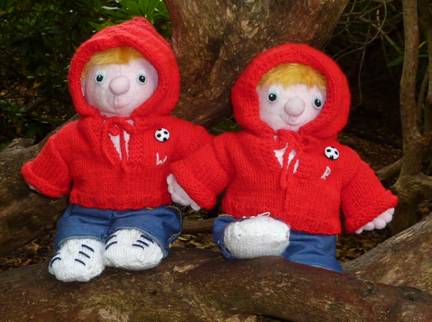
Salty Sam © Christina Sinclair 2015
Unauthorized use and/or duplication of material from this blog without express and written permission from this blog’s author and owner is strictly prohibited.
Links may be used to www.christina-sinclair.com

Picture Gallery
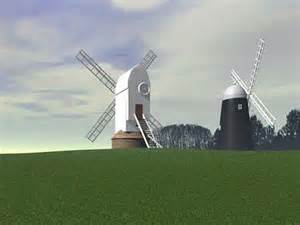
Jack and Jill windmills at the top of a hill in Sussex catching the wind to grind grain
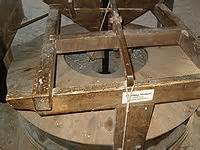 One millstone rotates on top of another
One millstone rotates on top of another
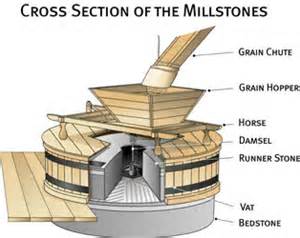
(deltamill.org)
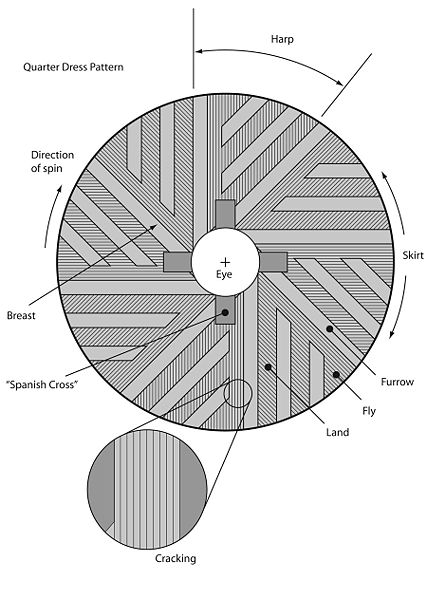
The grooves cut into the bottom millstone direct the flour from the centre to the edge
 Windmills on the Norfolk Broads help to pump water off the fields
Windmills on the Norfolk Broads help to pump water off the fields
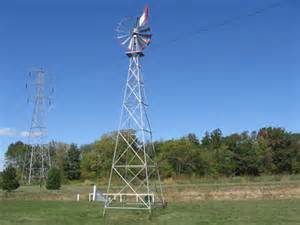 Windmills in warmer countries in the world are used to pump water up from under the ground
Windmills in warmer countries in the world are used to pump water up from under the ground
for use by people living on farms and ranches
 A wind farm generates electricity
A wind farm generates electricity
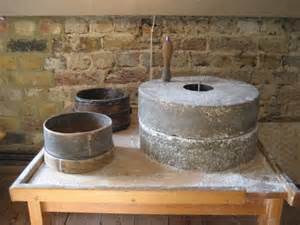 This is a quern which was two mini grind stones that were used in the home from as far back as the Iron Age –
This is a quern which was two mini grind stones that were used in the home from as far back as the Iron Age –
grains could be stored over winter and were eaten every day
It was hard work – this tradition gave us the phrase ‘the daily grind’
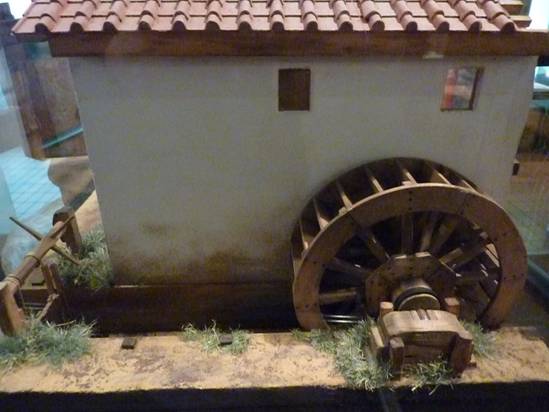 A model of a water wheel of the 1st – 2nd century
A model of a water wheel of the 1st – 2nd century
(Museum of London)
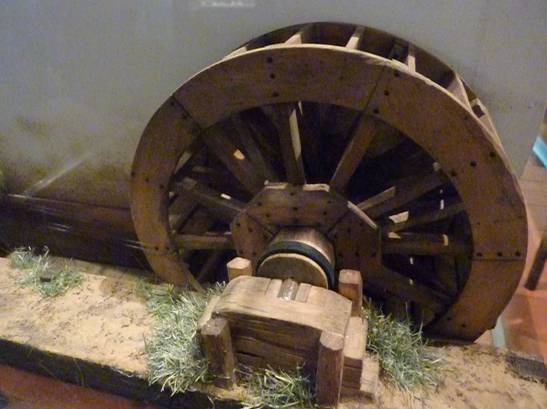 The water in the river turns the wheel – the mill uses water power instead of wind power
The water in the river turns the wheel – the mill uses water power instead of wind power
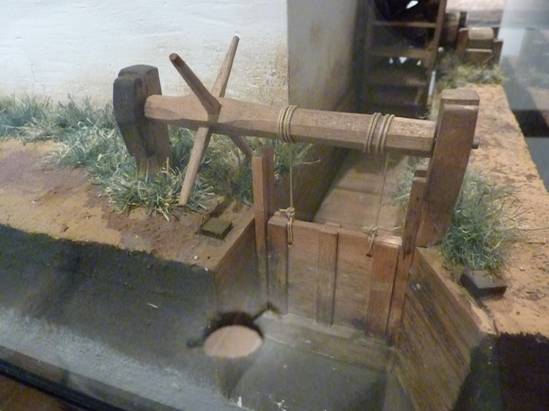 The sluice gate regulates the flow of water
The sluice gate regulates the flow of water
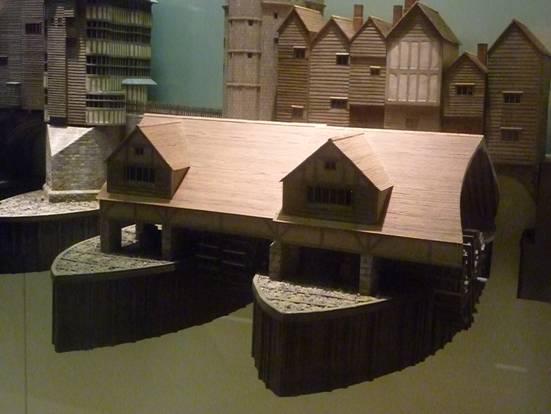 Watermills on the mediaeval London Bridge were used to make flour
Watermills on the mediaeval London Bridge were used to make flour

A mill stone
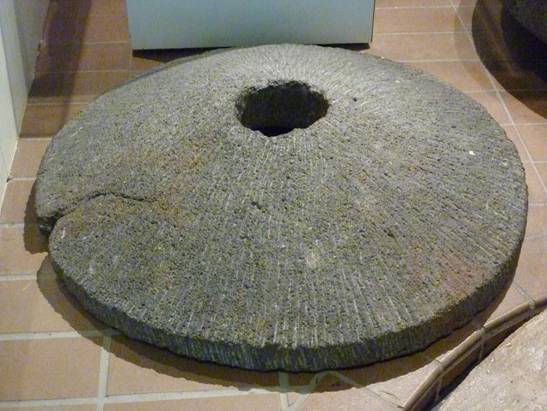 A mill stone
A mill stone
 The windmill sails are attached to a central block
The windmill sails are attached to a central block
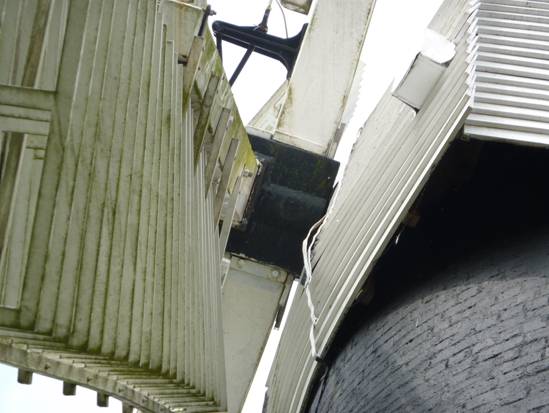 This is attached to the top of the windmill
This is attached to the top of the windmill
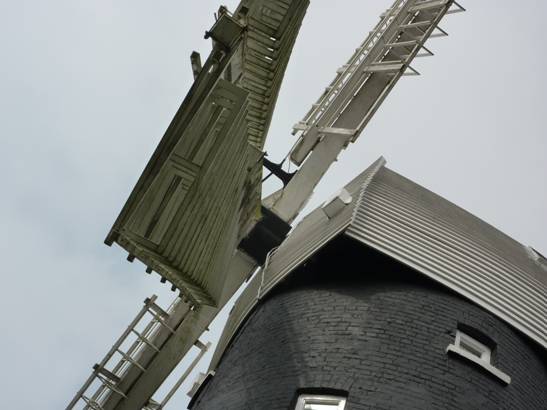 The top swivels
The top swivels
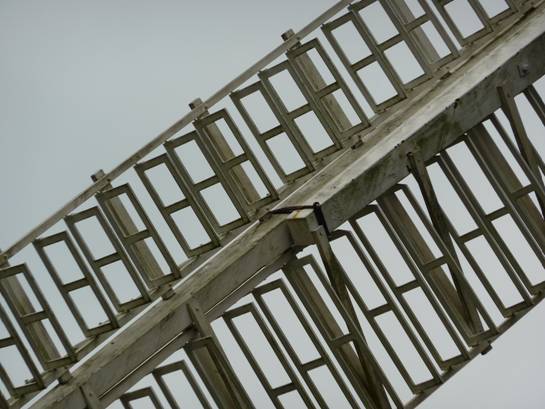 These sails are not in use
These sails are not in use
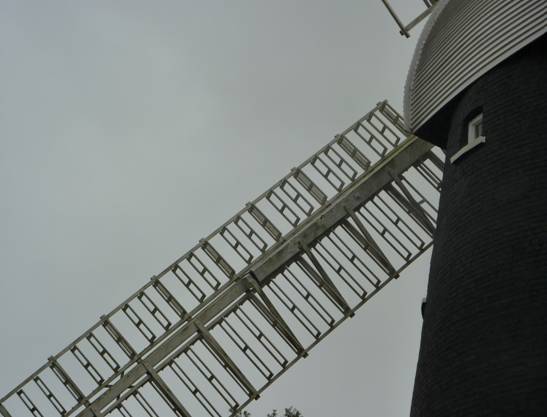 There are four sails
There are four sails
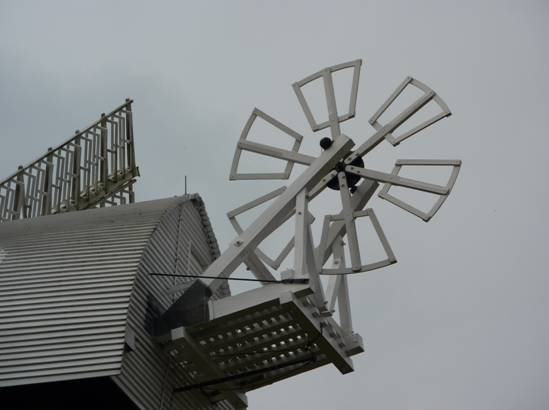 The back of the top is as important as the front
The back of the top is as important as the front
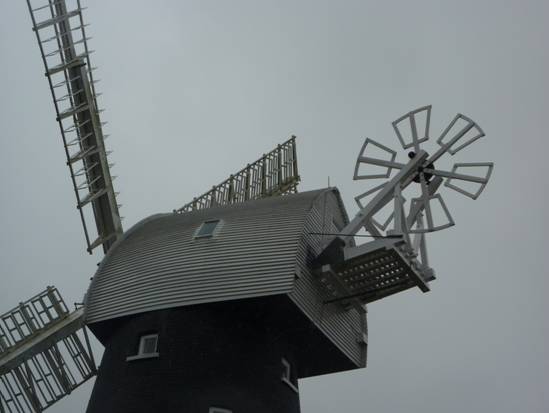 The top of the windmill
The top of the windmill
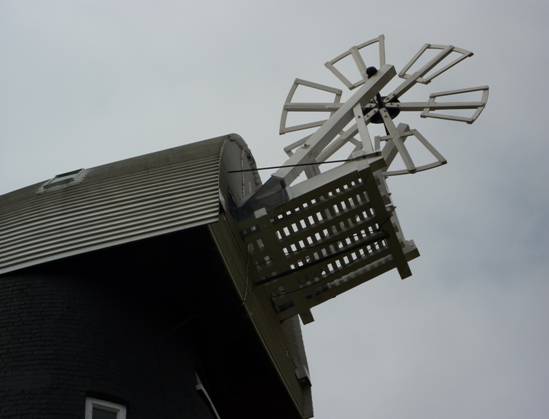 The top is a separate section from the main building which does not move
The top is a separate section from the main building which does not move
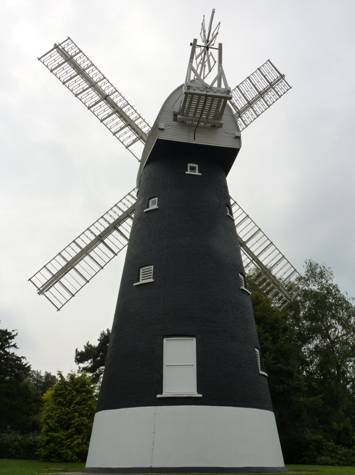 Some windmills have open days for the public to learn about how they work
Some windmills have open days for the public to learn about how they work

 THE SALTY SAM NEWS DESK
THE SALTY SAM NEWS DESK

My Auntie Alice has kitted my brother Windy Wally a new scarf this week.

She enjoyed doing the blanket from the blog post two weeks ago for her cat so much she decided to use the same knitting stitch to make something else.
Basketwork stitch is surprisingly easy to do when you get into the rhythm of doing it.
You will need at least 2 x 100g balls of yarn.
You can make a scarf with stripes but the joining on of colours will show more than on stocking stitch. (Stocking stitch is not suitable for scarves.)
*If you ever leave a piece of knitting for a long time, leave it on a stitch holder or a smaller sized needle because otherwise a line will probably appear across it.
![]()
NEWSDESK MINIMAKE
BASKETWORK SCARF
Cast on 30 stitches for a small child’s scarf and 40 stitches for an adult size one.
(Knit 5, purl 5) repeat these 10 stitches to end of row
Repeat this row 3 times
(Purl 5, knit 5) repeat these 10 stitches to end of row
Repeat this row 3 times
You can decorate the finished scarf ends with a fringe of yarn tassels, or a line of bought pompoms designed to trim (edge) curtains (make sure they are washable) or pull the ends up into a gathered point and add a yarn pompom.


*********************
TO ADVERTISE ON THIS BLOG
PLEASE CONTACT:
christina.sinclair.ads@aol.co.uk
********************* 

Quick Quiz
What do the following phrases mean?
- a millstone round someone’s neck
- it is run-of-the-mill
- the breadwinner
- on the breadline
- to like one’s bread buttered on both sides
- to use one’s loaf
- it is grist to the mill
- to separate the wheat from the chaff
- it’s my bread and butter
- half a loaf is better than no bread

BLOW MY FOGHORN!!!
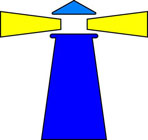
PLUS
Salty Sam fans can join in with their comments and share them with children all over the world. You will need to ask permission if you are not an adult.
Enter your e-mail address to subscribe to my blog and receive new Salty Sam Blog Posts for free by e-mail every week. Your address will be kept private and will not be shared with any third party.
Sign me up at the side bar



lt’s the Weekend!

HOW TO MAKE AN APRON
OUT OF A TEA TOWEL/DlSH TOWEL
Sometimes when you visit places on holiday you buy a souvenir tea towel and it remains in the drawer not being used. Or someone brings you one as a present home from holiday but your dishes dry in the dishwasher.
This is a way in which you can turn your tea towel into an apron to keep your clothes being covered in flour when you do some baking. It is best to use a tea towel that has a pattern just in the middle rather than one that goes right up to the edge.
Simply measure along the top to see how wide you want the top to be and then measure down along the side to see where your waist is in relation to the tea towel.
Fold the corners of the tea towel back and pin the folds into place. Hold the tea towel up against yourself or the person you are making the apron for and make sure the fit is right.
Using running stitch sew about 1cm/½ inch in from the newly created edge.
Then you need to sew a loop of tape to each top corner to put around the back of your neck and two tapes around the bottom of your sewing to tie around the back of your waist.
You can trim off the excess if you want to, but only after you are very sure that the fit is right.
Do not turn somebody’s tea towel into an apron without their permission.

TIP
If you have two ‘sideways’ tea towels you can sew them together to make a large cushion.
Sew the towels right sides together leaving a gap for stuffing then turn right sides out, stuff and sew up the gap or insert a cushion pad if you can find one the right size. Or sew them wrong sides together using over-sew stitches close together to reduce bulk in the seams because the towel might already have a seamed edge. Decide which method you think will work better.

It could be a colourful cushion for a child’s bedroom or a more sophisticated one to put on a sun lounger in the garden.

These cushions will need a lot of stuffing so you could use old tights. If they show up dark under a light coloured tea towel sew a lining fabric onto the back of the towel before you make the cushion up.
It is a good way to recycle old tights.
Please note that the material on this blog is for personal use and for use in classrooms only.
It is a copyright infringement and, therefore, illegal under international law to sell items made with these patterns.
Use of the toys and projects is at your own risk.
©Christina Sinclair Designs 2015

Quick Quiz Answers
- a millstone round someone’s neck –
- it is run-of-the-mill –
- the breadwinner –
- on the breadline –
- to like one’s bread buttered on both sides –
- to use one’s loaf –
- it is grist to the mill –
- to separate the wheat from the chaff –
- it’s my bread and butter –
- half a loaf is better than no bread –
- a heavy burden to carry – to have a responsibility that is difficult to bear
- it is ordinary and not special
- the person that earns the money to keep a family
- very poor
- to like to live in comfort and luxury
- to think in an intelligent way (loaf of bread = head – see next week’s blog post!)
- anything that can be used to your advantage
- to sort out what you want and what you don’t want – to identify people or things that are high quality from those that are not
- it’s the way l earn my living (how l get wages/money)
- anything is better than nothing
